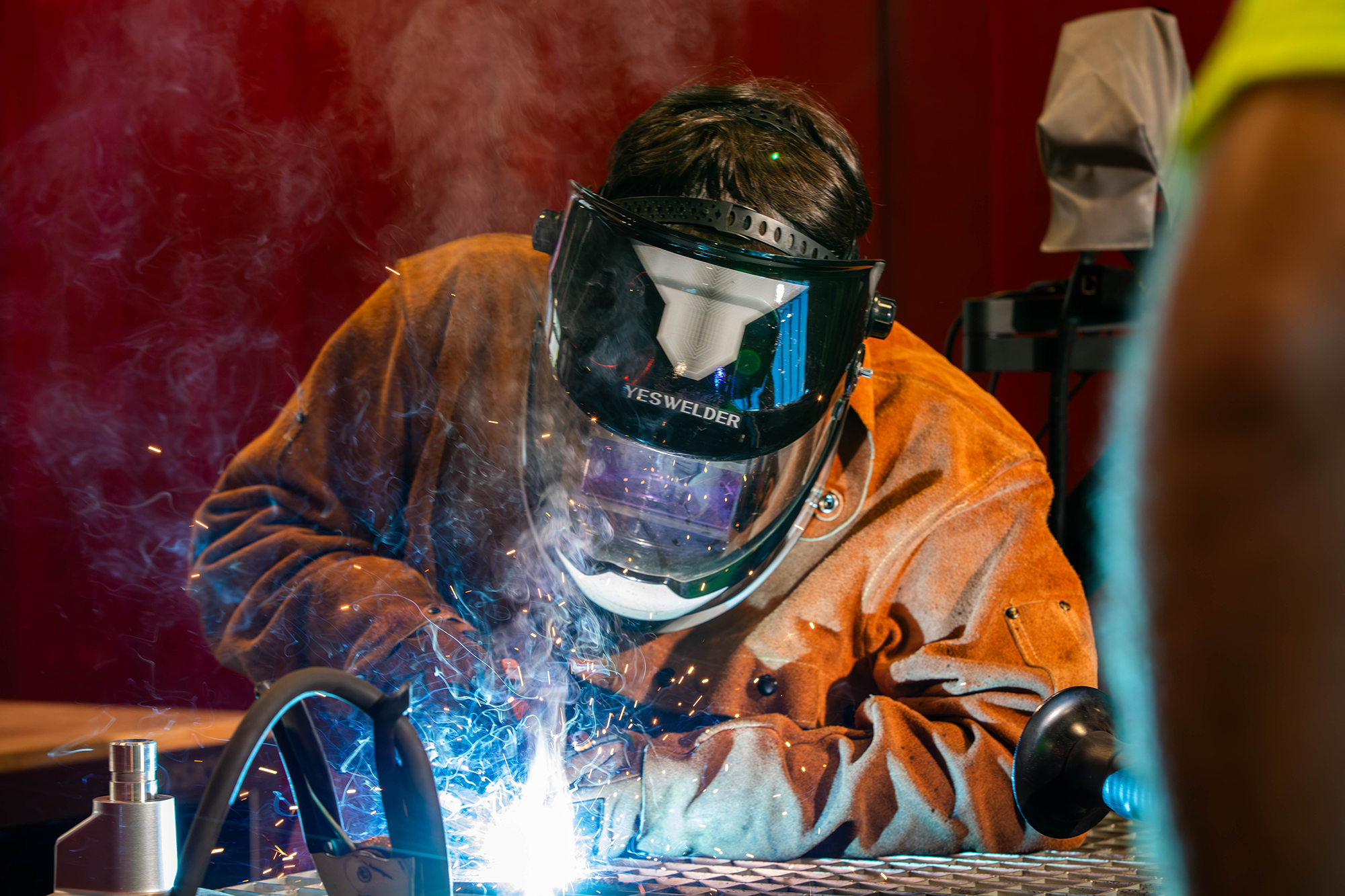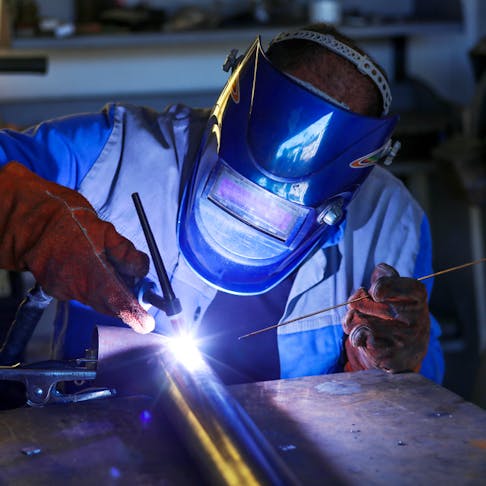Fast fixes to weld misalignment in Montana Mobile Welding and Repair Fabrication
Usual Welding Repair Issues and Exactly How to Address Them Efficiently
Welding repair work often encounter an array of problems that can jeopardize the stability of the end product. Typical issues include insufficient infiltration, porosity, and misalignment, to name a few. Each flaw offers unique challenges that need particular techniques for resolution. Understanding these problems is important for welders aiming to improve their end results and abilities. This discussion will check out these typical welding repair concerns and effective techniques to address them.
Poor Penetration
Inadequate infiltration occurs when the weld steel fails to totally fuse with the base material, resulting in weak joints and possible structural failures. This problem often comes from insufficient warm input, inaccurate electrode angle, or inappropriate welding speed. Welders might experience poor penetration because of a mistake of the needed specifications for a certain material thickness or kind. In addition, contamination on the base material's surface area can hinder reliable bonding, aggravating the issue. To resolve insufficient penetration, welders need to guarantee appropriate setups on their devices and maintain a tidy work surface. Routine evaluation of welds is advised to determine any deficiencies early, enabling timely improvements and the prevention of jeopardized structural integrity in bonded settings up.
Porosity
Porosity is a typical problem in welded joints that materializes as little gas bubbles entraped within the weld metal. This issue can jeopardize the integrity of the weld, resulting in lowered stamina and potential failing under tension. Montana Mobile Welding and Repair. Porosity normally occurs from contamination, dampness, or improper welding strategies, which enable gases to run away right into the molten weld pool. To address porosity, welders ought to ensure appropriate surface area prep work, maintain a tidy functioning atmosphere, and use ideal welding parameters. Additionally, picking the right filler material and securing gas can minimize gas entrapment. Regular inspection and screening of welds can help determine porosity early, assuring prompt rehabilitative activities are taken, thus preserving the high quality and dependability of the welded structure
Imbalance
Imbalance in welding can occur from different variables, including improper arrangement and thermal development. Recognizing the origin is vital for efficient resolution. Numerous improvement methods are offered to straighten elements and guarantee structural honesty.
Sources of Imbalance
Welding imbalance commonly stems from a range of underlying problems that can endanger architectural integrity. One key reason is inappropriate fit-up of components prior to welding, which can result in gaps and uneven surfaces. Variants in thermal development throughout the welding process can additionally cause distortion, particularly if the materials being joined have different coefficients of expansion. In addition, poor securing and fixturing may fall short to hold elements securely in location, bring about activity throughout welding. Badly maintained devices, including welding devices and tools, may present variances in the weld grain, more adding to imbalance. Lastly, driver mistake, originating from not enough training or experience, can likewise play a considerable duty in developing misaligned welds.
Modification Methods Readily Available
Dealing with misalignment properly calls for a combination of corrective strategies customized to the certain problems available. One usual technique is the use of jigs or components to hold elements in the correct placement during welding, ensuring regular positioning. In addition, preheating the products can help in reducing distortion and boost fit-up. For substantial misalignment, mechanical realignment strategies, such as making use of hydraulic jacks or clamps, can be employed to fix the position before welding. Post-weld warmth treatment might additionally be essential to ease stress and anxieties brought on by imbalance. Careful inspection and modification throughout the setup phase can stop imbalance issues from becoming significant problems, advertising a smoother welding process and enhancing overall structural stability.
Distortion
Distortion is an usual difficulty in welding that can occur from different aspects, consisting of irregular cooling and heating. Recognizing the reasons for distortion is vital for executing reliable avoidance techniques. Addressing this concern not only enhances architectural honesty however likewise enhances the total high quality of the weld.
Sources of Distortion
When based on the extreme warm of welding, materials typically undertake adjustments that can lead to distortion. This sensation largely emerges from thermal expansion and tightening throughout the welding process. As the weld location warms up, the material expands; upon cooling, it contracts, which can produce internal stresses. Furthermore, unequal home heating throughout a workpiece can aggravate these tensions, causing warping or bending. The type of material also plays a significant role; steels with differing thermal conductivity and coefficients of expansion may respond in a different way, resulting in uncertain distortions. Poor joint layout and insufficient fixturing can add to imbalance throughout welding, enhancing the likelihood of distortion. Comprehending these reasons is crucial for reliable welding repair and avoidance strategies.
Prevention Techniques
Reliable prevention strategies for distortion during welding emphasis on regulating heat input and making certain correct joint design. Keeping a constant warmth input assists to reduce thermal expansion and tightening, which can bring about distortion. Making use of strategies such as preheating the work surface can likewise reduce Visit Your URL the temperature level gradient, advertising uniform heating. Furthermore, choosing appropriate joint styles, such as T-joints or lap joints, can enhance stability and decrease tension focus. Executing correct fixturing to secure the work surfaces in location even more aids in preserving placement during the welding process. Lastly, staggered welding series can disperse warm a lot more equally, preventing localized distortion. By using these methods, welders can considerably decrease the likelihood of distortion and enhance the general top quality of their welds.
Splitting
Cracking is an usual concern experienced in welding fixings, commonly resulting from different elements such as improper cooling prices, product option, or poor joint prep work. The occurrence of splits can substantially jeopardize the stability of the weld, causing possible failures throughout procedure. To resolve this issue, welders Going Here should initially assess the origin, ensuring that products work and properly picked for the certain application. In addition, regulating the air conditioning price during the welding process is necessary; quick air conditioning can cause stress and anxiety and result in splitting. Correct joint style and prep work additionally add to decreasing the risk. Applying these strategies can improve weld quality and toughness, eventually decreasing the chance of fracturing in ended up weldments.

Incomplete Fusion
A considerable issue in welding fixings is insufficient combination, which occurs when the weld steel does not sufficiently bond with the base product or previous weld passes - Montana Mobile Welding and Repair Belgrade Welding. This problem can result in weaknesses in the joint, possibly compromising the stability of the bonded structure. Variables adding to insufficient fusion consist of insufficient heat input, improper welding technique, and contamination of the surface areas being signed up with. To address this concern properly, welders ought to guarantee proper pre-weld cleansing and surface area prep work, as well as change their welding criteria to accomplish appropriate penetration and fusion. Normal examination during the welding procedure can also assist identify incomplete combination early, permitting timely check restorative procedures to boost the general quality of the weld
Overheating
While welding repair work can enhance architectural honesty, overheating provides a substantial challenge that can cause material destruction. Extreme warmth throughout welding can change the mechanical properties of steels, resulting in decreased toughness, enhanced brittleness, and warping. This sensation is especially vital in high-stress applications where architectural reliability is paramount. Identifying overheating can include aesthetic evaluations for staining or distortion, in addition to monitoring temperature during the welding process. To minimize the risks connected with getting too hot, welders ought to use suitable methods, such as managing heat input, adjusting traveling speed, and making use of suitable filler materials. Furthermore, implementing pre- and post-weld warmth therapies can assist recover material buildings and enhance the general top quality of the fixing, making sure long-lasting performance and safety.
Often Asked Questions
What Are the Typical Indicators of a Welding Flaw?

Exactly How Can I Evaluate My Welds for Quality?
To test welds for quality, one can use visual assessments, ultrasonic screening, and radiographic methods. Each method assures structural integrity, identifies flaws, and verifies adherence to specified standards, ultimately enhancing the dependability of the welded joints.
What Safety Precautions Should I Take While Welding?
When welding, one should prioritize security by using appropriate individual safety tools, ensuring correct air flow, safeguarding combustible products away, keeping a clean work space, and knowing environments to stop injuries and accidents.
Can I Fix a Weld Without Redoing the Entire Joint?
Fixing a weld without redoing the whole joint is possible, relying on the damages (Montana Mobile Welding and Repair Belgrade). Strategies such as grinding, including filler product, or using a welding process can effectively deal with details imperfections while preserving the surrounding structure
What Tools Are Important for Reliable Welding Repair Works?
Essential tools for effective welding fixings consist of a welding machine, cable brush, mill, protective gear, clamps, and filler materials. Each device plays an important duty in ensuring high quality and safety and security throughout the repair service process. Porosity usually arises from contamination, moisture, or inappropriate welding techniques, which enable gases to get away into the liquified weld pool. Inadequately maintained tools, including welding makers and tools, may present variances in the weld bead, more adding to imbalance. When subjected to the intense heat of welding, products commonly undergo changes that can lead to distortion. Fracturing is a common problem experienced in welding repairs, frequently resulting from numerous factors such as inappropriate air conditioning rates, product choice, or insufficient joint prep work. A substantial concern in welding repair work is incomplete combination, which takes place when the weld steel does not sufficiently bond with the base material or previous weld passes.